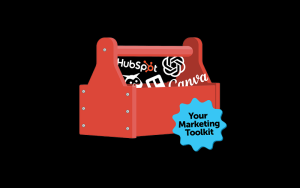In marketing, the more personalized the campaign, the better. The average consumer wants to feel connected to their favorite brands and products. In fact, according to the University of Texas, consumers prefer personalized content because it gives them a sense of control they otherwise would not have. Because of personalization, direct mail campaigns continue to be successful marketing options, not only maximizing response rates, but proving how important customers are to the brands they stand by.
But why is targeted marketing essential to begin with? How does it coincide with direct mail campaigns? How can targeted direct mail campaigns maximize response rates for marketers?
Why Is Targeted Marketing Essential to Begin With?
According to Forbes, “Companies who adopt data-driven marketing are more likely to have an advantage over the competition and increase profitability. In fact- they are six times more likely to be profitable year-over-year.”
Furthermore, according to Salesforce, 52% of consumers (and 65% of B2B buyers) say they’re likely to switch brands if a company doesn’t personalize communications to them.
Targeting is essential to the future of marketing. The numbers don’t lie. Not only do companies see the value, but consumers prefer targeted marketing as well. But how does targeted marketing coincide with direct mail campaigns, and how does combining the two affect the response rates of these campaigns?
How Do Targeted Direct Mail Campaigns Work?
In direct mail campaigns, variable data printing is the name of the game. However, with the right data and tools, you can take this targeted marketing format to the next level. According to a survey performed by Adobe, the top three ways marketers add value include the use of CRM data, real-time data from analytics, and integrating analytics across channels. By using cross-channel data to your benefit in direct mail campaigns, you can create robust consumer profiles and maximize your response rates accordingly.
While many direct mail campaigns focus on driving traffic to a website by using data such as names, emails, and offers, using more focused data elements will increase the likelihood that these consumers actually listen to your call-to-action and purchase your products again in the future.
Furthermore, these data compilation tactics will also help you to filter out customers that are unlikely to respond to your marketing tactics, allowing you to slash direct mail costs without sacrificing quality.
Maximizing Your Campaign’s Response Rate
Let’s examine how marketers are able to target potential audiences using demographic profiling and filter out individuals using CRM data.
According to Gartner, by 2021, CRM will be the largest area of spending in enterprise software. Customer Relationship Management (CRM) gives businesses a diverse and comprehensive look into their current and potential clients. The data compiled not only includes basic demographic data, but also interactions that customers have had with your business, products they have been interested in, and other pertinent information which can help to narrow down your direct mail list.
In fact, you can even choose to target their personal social media information, along with likes or dislikes, to understand more about their purchasing patterns and interests. All of this is likely to narrow down your direct mail list quite a bit, as targeting individuals that don’t fit your desired description is almost always a waste of your time and resources.
For example, if you utilize CRM data and discover that one third of your clients have purchased a particular product in the last two months, you may want to directly target them. However, if you then find that 17 of these individuals have complained about the product to your team, or have complained about receiving direct mail in the past, you should then exclude them from your direct mail campaign to reduce the chances of them complaining once again or becoming upset with your business.
You can also use these data points, along with data compiled from your site and your purchases, to create demographic profiles which can later be transformed into buyer personas. From there, you can use these personas to target specific demographics, with specific interests or purchases, to create far more targeted and effective direct mail campaigns. This can include age groups, locations, purchase history, education levels, interests and hobbies, and countless other targeting methods.
The more honed your direct mail campaign is, the higher your response rate will be and the more money you will save on customers that are unlikely to respond. This is how you can maximize your response rates, acquire and retain clients, and use targeting in the best way possible for you and your team.
Interested in direct mail as a marketing tactic? Contact us today about print marketing and how you can use it for your business!




